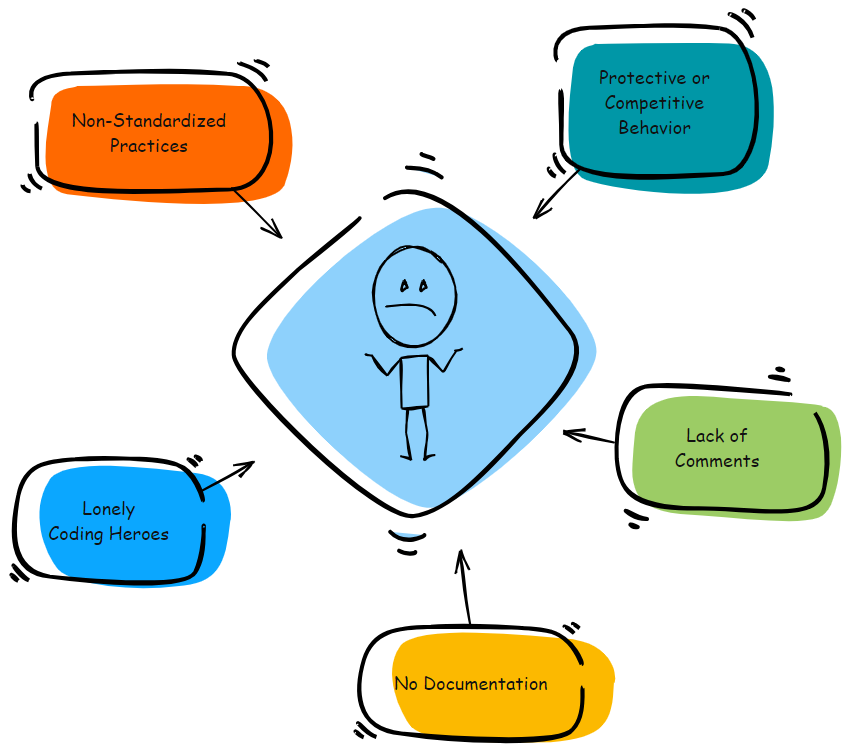Alex inherits a legacy codebase after a senior developer leaves abruptly. The code lacks comments and documentation, and the original developer didn’t follow standard coding practices. Alex struggles to understand how different modules interact. Each time a bug arises, he has to reverse-engineer the code, consuming valuable time and delaying bug resolution.

What Could Be Done About It?
- Implement Coding Standards and Documentation Guidelines:
- Action: Establish coding standards that mandate proper commenting and documentation for all new code and when modifying existing code.
- Benefit: Ensures that all future work contributes to a more maintainable codebase, preventing the problem from escalating.
- Incremental Documentation During Bug Fixes:
- Action: As Alex works on fixing bugs, he documents the sections of code he interacts with by adding comments and updating any available documentation.
- Benefit: Gradually improves the codebase without requiring a massive initial effort, making future bug resolutions faster.
- Refactor Code for Clarity:
- Action: When possible and reasonable, refactor confusing or complex code segments to make them more readable and maintainable.
- Benefit: Simplifies understanding of the code, reducing the time needed to diagnose and fix bugs.
- Utilize Code Analysis Tools:
- Action: Employ static code analyzers, dependency graphs, or reverse engineering tools to gain insights into the code structure.
- Benefit: Helps Alex visualize relationships and dependencies within the code, speeding up the comprehension process.
- Create a Shared Knowledge Base:
- Action: Develop an internal wiki or repository where team members can document findings, explanations of code sections, and solutions to common issues.
- Benefit: Facilitates knowledge sharing and serves as a reference for current and future team members.
- Conduct Code Reviews and Pair Programming:
- Action: Engage in regular code reviews and pair programming sessions with other team members.
- Benefit: Encourages collaboration, improves code quality, and disseminates understanding of the codebase across the team.
- Automate Documentation Generation:
- Action: Use tools like Javadoc, Doxygen, or Sphinx to generate documentation from annotated code comments.
- Benefit: Streamlines the documentation process, making it less time-consuming and more likely to be maintained.
- Seek Training and Mentorship:
- Action: If possible, connect with other developers who have experience with the codebase for mentorship or training sessions.
- Benefit: Direct knowledge transfer can significantly reduce the learning curve and improve efficiency.
- Allocate Time for Documentation Efforts:
- Action: Advocate for dedicated time in project schedules to document and understand the codebase.
- Benefit: Recognizes documentation as a valuable activity, leading to long-term time savings in bug resolution.
- Engage Management for Support:
- Action: Communicate the challenges to management, emphasizing how poor documentation impacts productivity and the time it takes to resolve bugs.
- Benefit: This may result in allocating additional resources, such as time, tools, or personnel, to address the documentation gap.
By taking these steps, Alex can progressively improve the codebase’s documentation and structure, which will help reduce the time it takes to resolve software bugs. This will benefit Alex’s immediate work and enhance the overall quality and maintainability of the software for the entire team.

